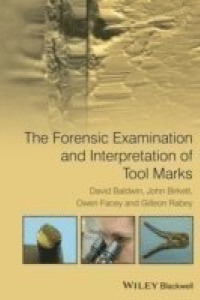
Forensic Science and Humanitarian Action : Interacting with the Dead and the Living 2 Volume Set
Bok av Parra Roberto C Parra
Widens traditional concepts of forensic science to include humanitarian, social, and cultural aspects Using the preservation of the dignity of the deceased as its foundation, Forensic Science and Humanitarian Action: Interacting with the Dead and the Living is a unique examination of the applications of humanitarian forensic science. Spanning two comprehensive volumes, the text is sufficiently detailed for forensic practitioners, yet accessible enough for non-specialists, and discusses both the latest technologies and real-world interactions. Arranged into five sections, this book addresses the 'management of the dead' across five major areas in humanitarian forensic science. Volume One presents the first three of these areas: History, Theory, Practice, and Legal Foundation; Basic Forensic Information to Trace Missing Persons; and Stable Isotopes Forensics. Topics covered include: Protection of The Missing and the Dead Under International Law Social, Cultural and Religious Factors in Humanitarian Forensic Science Posthumous Dignity and the Importance in Returning Remains of the Deceased The New Disappeared - Migration and Forensic Science Stable Isotope Analysis in Forensic Anthropology Volume Two covers two further areas of interest: DNA Analysis and the Forensic Identification Process. It concludes with a comprehensive set of case studies focused on identifying the deceased, and finding missing persons from around the globe, including: Forensic Human Identification from an Australian Perspective Skeletal Remains and Identification Processing at the FBI Migrant Deaths along the Texas/Mexico Border Humanitarian Work in Cyprus by The Committee on Missing Persons (CMP) Volcan De Fuego Eruption - Natural Disaster Response from Guatemala Drawing upon a wide range of contributions from respected academics working in the field, Forensic Science and Humanitarian Action is a unique reference for forensic practitioners, communities of humanitarian workers, human rights defenders, and government and non-governmental officials.







